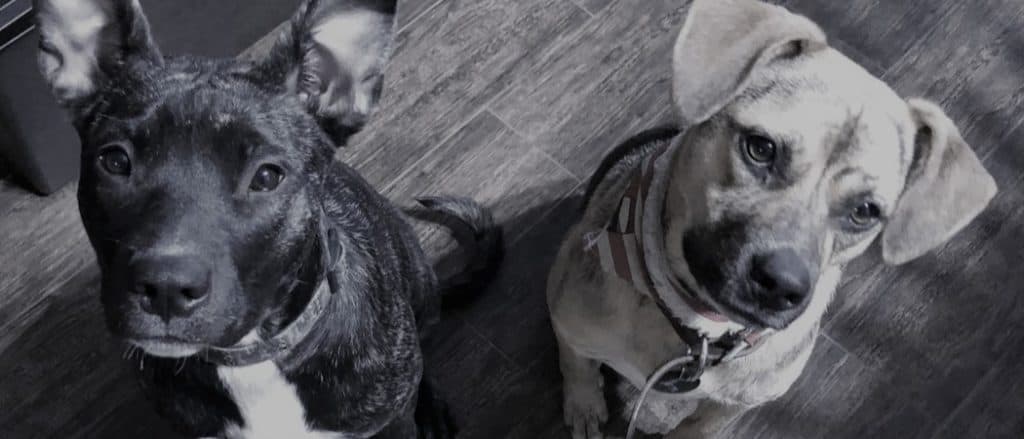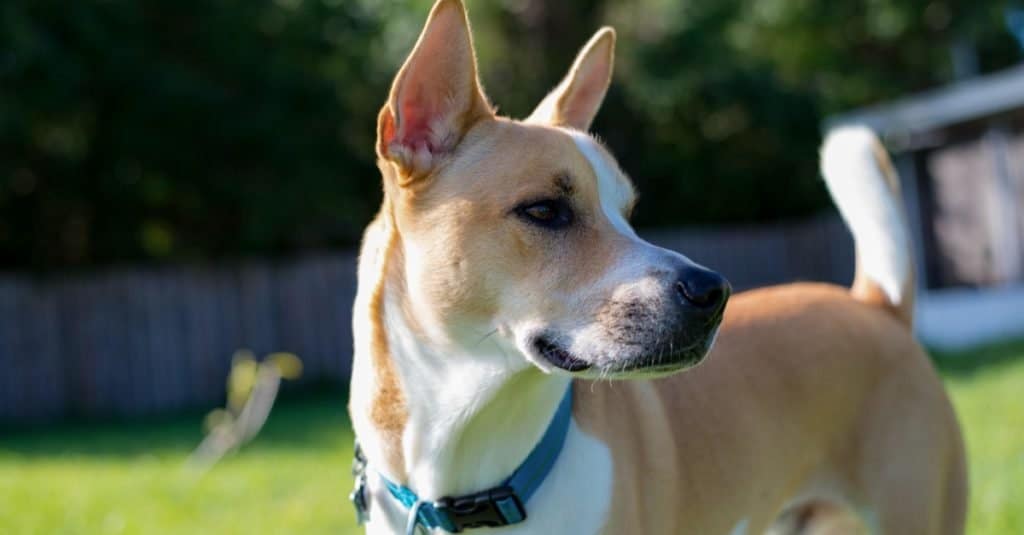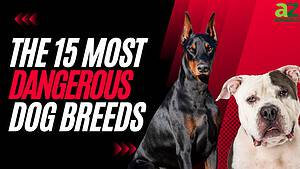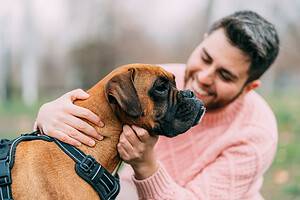One is a mix of a German shepherd and an American pit bull terrier. The other is a mix of a Siberian husky and an American pit bull terrier. Learn the critical differences between the German shepherd pitbull vs. a pitsky, including their appearance, temperament, and needs. Plus, learn about their common health problems so you can be proactive if you have the pleasure of calling one of these pups yours!
German Shepherd Pitbull vs. Pitsky: 8 Key Differences
| German Shepherd Pitbull | Pitsky | |
|---|---|---|
| Appearance | Tan, grey, black, brown, fawn, and white coats (mix of colors) Thick, short coats | White, gray, brown, black, or brindle Athletic build, bi-colored coats Face like a wolf Single or double-coat |
| Size and Weight | 17 to 26 inches at the shoulder 30 to 90 pounds | 17 to 23.5 inches tall 30 to 60 pounds |
| Temperament | Affectionate, intelligent, and protective | They can tolerate alone time by entertaining themselves but prefer their family’s company. Requires 90 minutes of daily exercise |
| Growth Cycle | Completely grown at about nine months up to 1.5 years | Completely grown at about 15 months |
| Lifespan | 10 – 12 years | 12 – 16 years |
| Grooming Requirements | Minimal grooming required; regular brushing | Minimal grooming required; weekly brushing, baths every couple of months |
| Social and Exercise Needs | Require 90 minutes of exercise and require at least 60 minutes of mental stimulation. | Require 90 minutes of exercise and at least 60 minutes of mental stimulation. |
| Health Problems | Heart disease, hypothyroidism, hip dysplasia, skin irritation, and bloat | Congenital heart disease, hip dysplasia, cataracts, glaucoma, patella luxation, degenerative myelopathy |
German Shepherd Pitbull vs. Pitsky: Appearance
German shepherd pitbulls, commonly referred to as German sheppits, are a cross between a German shepherd and an American pitbull terrier. These pups vary in appearance. They have thick, short coats that often have a mix of colors, including tan, grey, black, brown, fawn, and white. It’s rare for them to have a solid-colored coat. Pitsky pups are often bi-colored; their coats may be white, gray, brown, black, or brindle. They may have either a single or a double coat. Their faces make them appear much like a wolf, and their bodies follow suit with a muscular build.

German shepherd pitbulls are also known as German sheppits.
©Jody Huckaby/Shutterstock.com
German Shepherd Pitbull vs. Pitsky: Size and Weight
The German shepherd pitbull may grow between 17 to 26 inches tall at the shoulder and can weigh between 30 and 90 pounds when fully grown. Similarly, pitskies may grow between 17 to 23.5 inches tall at the shoulder and weigh at least 30 pounds when fully grown though they may weigh up to 60 pounds.
German Shepherd Pitbull vs. Pitsky: Temperament
When it comes to temperament, German shepherd pitbulls are protective and affectionate. They’re incredibly loyal and sociable, doing well in large families. So long as puppies are socialized, they grow up to be friendly pups, welcoming all with open arms — er, happy tail wags. They need a family, however. These pups don’t do well alone.
Pitskies are a bit different. While they also benefit from early socialization and become affectionate and gentle, they have a strong prey drive. They need active owners who can train them well. They’re fantastic hunters and guardians who enjoy activities like racing and sledding. They don’t do well in homes with other pets and prefer being the only four-legged animals in the house.
German Shepherd Pitbull vs. Pitsky: Growth Cycle
A German shepherd pitbull stops growing anywhere between nine months and 1.5 years. Pitskies are completely grown around the 15-month mark.
German Shepherd Pitbull vs. Pitsky: Lifespan
While German shepherd pitbulls live around 10 to 12 years, you can expect a pitsky to stick around a little longer. They have an average lifespan of 12 to 16 years.

Pitskies have a lifespan of 12 to 16 years.
©AllisonJ7/Shutterstock.com
German Shepherd Pitbull vs. Pitsky: Grooming Requirements
Neither German shepherd pitbulls nor pitskies are high maintenance. They require minimal grooming. Just keep up with regular brushing and offer baths after particularly messy outings.
German Shepherd Pitbull vs. Pitsky: Social Needs
German shepherds will find fulfillment in your home if you have a big family. A large yard where they can exercise and play for at least 1.5 hours daily is ideal. They don’t tolerate long periods alone well and may resort to destructive habits without constant company.
PItskies need to refine their skill sets with a patient and active owner. Their strong prey drive requires an outlet. They have a higher need for mental stimulation for at least an hour each day and need exercise and play for at least 90 minutes. They don’t do well with other pets (especially not small ones).
German Shepherd Pitbull vs. Pitsky: Health Problems
Health problems a German shepherd pitbull may be susceptible to include heart disease, hypothyroidism, bloating, allergies, hip dysplasia, and skin irritation. PItskies are prone to developing allergies, hypothyroidism, and hip dysplasia as well. They may also be prone to developing cataracts. Knowing what each pup may be susceptible to helps you remain proactive with vet checkups to ensure they have the healthiest and longest life possible alongside you.
The photo featured at the top of this post is ©
Ready to discover the top 10 cutest dog breeds in the entire world?
How about the fastest dogs, the largest dogs and those that are -- quite frankly -- just the kindest dogs on the planet? Each day, AZ Animals sends out lists just like this to our thousands of email subscribers. And the best part? It's FREE. Join today by entering your email below.
Thank you for reading! Have some feedback for us? Contact the AZ Animals editorial team.







